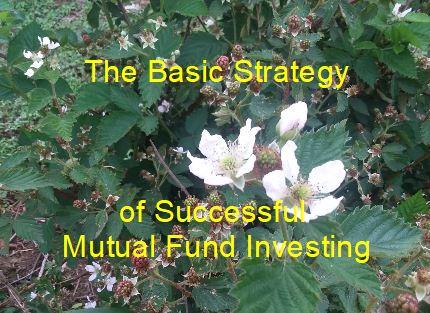
Stock investing with mutual funds is really very easy if you understand the basic principles, which themselves are really not that difficult to grasp. It doesn’t take a lot of time either. Probably the more difficult task is gathering together the money you need to invest in the first place and then investing more money regularly. That is where FIREd by Fifty: How to Create the Cash Flow You Need to Retire Early comes in to provide a strategy and suggestions on where you can find extra money in your budget to gather the funds you need to invest for your future. In this article, we’ll go over the basic principles of successful investing and then how you can put these principles to use in mutual fund investing.
(Note, this site contains affiliate links. As an Amazon Associate I earn from qualifying purchases. When you click on an affiliate link and buy something, The Small Investor will get a small commission for the referral. You are charged nothing extra for the purchase. This helps keep The Small Investor going and free. I don’t recommend any products I do not fully support. If you would like to help but don’t see anything you need, feel free to visit Amazon through this link and buy whatever you wish. The Small Investor will get a small commission when you do, again at no cost to you.)
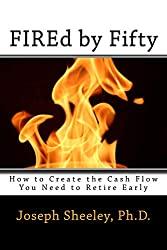
FIREd by Fifty: How to Create the Cash Flow You Need to Retire Early
Principle 1: Unpredictability of markets and Efficient Market Theory
The first principle has to do with the impossibility of making money by predicting where markets will go. When you think about investing, you probably think about smart people judging the markets, then putting their money in just the right places to make a killing. Maybe they read the paper and get a great idea of where a tech stock is headed, or see people driving to work and figure out a great investment in a tire manufacturer or a chain of gas stations.
This is not how people really make money in the stock market. This is equivalent to believing that people are great roulette players and know just when to be on number 34, or bet on red or black, or bet on odds or evens. The truth is, unless you’re trading on insider information (which is illegal, unless you are in the US Congress), you cannot become wealthy figuring out where to put your money based on hunches or observations. There is a fundamental economic principle called the Efficient Market Theory that says, assuming there are enough people in the markets, everything that is currently known is already priced into the markets.
For example, you may think that stores are going to sell a lot of stuff in December and think you can buy into JC Penney in October and make a profit when shares go up, but the fact that sales will increase is already priced into the share price of JC Penney stock, so the stock price will not go up just because December sales are higher than October sales. Other people are already predicting that JC Penney will sell more stuff in December because they always do, so when they buy or sell the shares, that information is already priced in there. In fact, if sales in December are lower than people were expecting, the share price may go down in January when the news comes out even though December sales were higher than October sales.
Realize also that information that was not available before a stock traded last will be priced into the stock once the news breaks intermediately. So if you hear some news about a company on the evening news or through FaceBook when the markets are closed for the night, you aren’t going to be able to buy into the stock the next morning and make money. Think of it this way, if you bought a lottery ticket for $2 and picked the 6 winning numbers, would you sell it to someone else for $2, or even $20 or $200 if they offered to buy it in the middle of the night before the lottery office opened? No, you know it is a winner so the value has increased dramatically. Just because you paid $2 yesterday for the ticket has no bearing on what you would be willing to sell it for today after the news has broken.
And just like individual stocks, information that effects whole markets is already priced into the markets. If you hear that peace has broken out in the Middle East or cancer has been cured, you aren’t going to be able to make money buying into a mutual fund. The news is already out there. Really, watching the news may be interesting, but you can’t profit from it. So much for business magazines and shows.

(Want to become an expert in single stock investing, plus learn what you need to be doing at each stage of life to grow wealthy? Get a copy of The SmallIvy Book of Investing.)
Principle 2: The short, medium, and long-term trends
So if all of the news is already priced into the markets, what is left? The answer: largely randomness. If you were to bet $1 on whether the market would close higher or lower tomorrow just before stocks close today and did this every day for a year, you would end up very close to even. You might be up $10 or $20, or down $5 or $50, but you wouldn’t be up $100 or $200. You would be right about half of the time and wrong about half of the time. The price people are willing to pay for stocks as the markets are closing today is what they consider fair based on what they know right now. Your guess is as good as anyone’s about what will happen tonight or tomorrow to cause the markets to move one way or another.
What stocks do day-to-day, or even week-to-week is the short-term trend. What they do over periods of a few months to a year or more is a medium-term trend. What they do during a period of several months to years is the long-term trend. If stocks go up in a steady fashion, it is an uptrend. If they go down, it’s a downtrend. If they go nowhere, they’re “drawing lines.” People called chartists or technical analysts study these trends carefully and try to use them to make decisions on when to buy or sell. In general you’ll find that looking at the trends is good for telling you where you are and where you were, but not where you’re going. It’s really like trying to drive a car with the front window blacked out. You can see the road rising or turning from behind and you can assume that it will continue to do the same thing, but eventually it will change slope or direction but you won’t realize it until you have traveled quite a distance after the trend has started to change.
Picture now that you’re sitting in a raft riding the surf, looking at the beach. You have an anchor that keeps you from moving horizontally, but the line is elastic so you can go up and down. Let’s say that you have a bet with your friend that you can raise your hand when you are going to go upward on a wave and gain altitude and lower it when you’re going to decline and lose altitude. He will pay you a dollar for each foot of elevation change you correctly time. There are small ripples on the waves that would represent the short-term trend. If you were able to time these, you could gain a lot of ground since you would be going up and down almost constantly. But you would quickly find that these are very random and whether you’ll be going up or down at any given moment on these would be difficult to judge, so you’d be wrong about as often as you’d be right, so you’d quickly give up.
There are also the regular waves, the kind that you would normally surf. These are bigger and would move you up or down a lot more than the little ripples. You would almost think that you could predict how high you would get and time these waves since you’d know that once you started up one it would carry you for a ways. You would do better trying to time your rise on these waves, but you would still find that sometimes when you thought you were starting up a big wave, it was actually pretty small. Other times you would not raise your hand, thinking the wave just started wasn’t going to carry you very far, and miss out on a big wave that would have lifted you several feet. Maybe you would even raise your hand after you had gone up quite a ways, thinking that the wave would rise forever, but then reach the crest and come crashing back down. This is the medium-term trend that many people try to time, but usually are less than successful. They make some money, but less than they would if they had just bought into the markets and held on.
If you waited for several hours, you would notice that you kept going up very slowly for about 12 hours, then started going down slowly and kept going down for about 12 hours. These are the tides. Sometimes you’d have a higher or lower tide than usual, and the timing would vary a bit with time, but it would be predictable enough that you could reliably gain a lot of ground by just keeping your hand up during the rising tide and then putting your hand down and keeping it down during the falling tide. You might miss a bit when the tides were changing, but in general you could gain a lot of ground and make a lot of money from your friend by doing this. The long-term trend in the markets, the one that extends over a period of decades or more, is like the tides. Just like them, it is predictable, except it always goes up. It is possible that some day it may stop going up, but as long as the economy keeps growing, which it will do as long as the population keeps growing and people become more efficient at producing things, it will continue to go up.
.
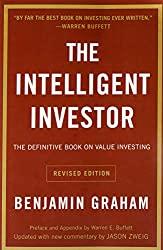
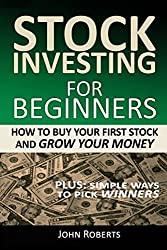
Principle 3: Markets will eventually return their long-term average
While it is impossible to predict what a given market will do over a period of a few days or even a couple of years, over a really long time, like a few decades, markets will provide returns in line with their long-term averages. For example, large US stocks will return about 10%-12% before inflation or about 7% after inflation. Large international stocks will return about the same. Small stocks will return 12%-15% before inflation. Bonds might return 5-8% before inflation. To get an idea of how different types of investments behave and what kind of returns you can get, check out the first few chapter of The SmallIvy Book of Investing.
This doesn’t mean that if large US stocks decline 15% one year that they will go up 30% the next to go back towards the average. It certainly doesn’t mean that if you pick one large US company that you’ll get a pre-inflation return of 10-12% annualized per year. It does mean that if you hold a basket of large US stocks for 30 years, you will almost certainly get an annualized return near 10-12% before inflation or 7% after inflation.
It also means that while a certain sector of the markets will outperform the others during a given period of time, over long periods of time they’ll trade off on who leads and who trails. For the last several years large US growth stocks have done great and international stocks have been laggards. Eventually that trend will reverse, however, and international will lead the way. Other times, small stocks will be king and make huge returns that put the large companies to shame, or bonds will be the place to be (usually during down markets). Who will be the leader at any given time, no one can say, but know that different sectors will lead the markets at different times.
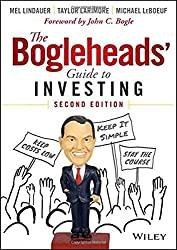
The Bogleheads’ Guide to Investing is a great resource for those wanting to learn index investing. (If you want to learn all about the different investing options and the risks involved, the first few chapters of The SmallIvy Book of Investing fully covers this material.)
Putting it all together
So, we have the three principles:
- There is no way you can predict what will happen using the news or trying to time things based on your observations.
- The short and the medium-term trends are effectively random and cannot be used because you don’t know when they’ll change. The long-term trend is always up.
- Different parts of the markets will do well at different times and over very long periods of time each area of the market will provide a fairly predictable return.
Given these three principles, it makes no sense to try to time the markets by watching the news. Anything you know is already priced into stocks by the time you try to buy. It also makes no sense to try to buy and sell stocks based on the short or the medium trends because those are unpredictable as well. Hiring a professional money manager to try to do this will not work either. She won’t have any more luck than you will.
What does make sense is to focus on the sure thing: The long-term trend. If you buy and hold, while there will be ups and downs along the way, eventually your balance will go up since the long term trend is always up.
It also makes sense to spread your money around since different areas of the market will do well at different times. If you buy just large US stocks, some of the time you’ll be leading the markets, but other times you’ll be lagging. If you buy a little of everything, they will all be going up over the long term, plus something will probably be going up at any given moment. You’ll always have investment in whatever is doing well at any given time. This means the value of your portfolio will fluctuate less since the things going up will balance out the things going down.
Finally, provided you have a long time to invest such that you have time for each area of the markets to follow its long-term average return, it makes sense to invest a bit more in the areas of the market that do the best. So if you have 30 years until you’ll touch the money, it makes sense to focus on stocks instead of bonds, and skew towards smaller stocks instead of larger ones. You don’t want to put everything into small stocks since that will make your portfolio balance go up and down more and you’ll have periods where you’re kicking yourself because small stocks are crashing while big ones are leading, but you might want to put 60% in small stocks and 40% in large stocks. Maybe put 5-10% in bonds if you want a little more stability.
An example portfolio
The king of index funds was John Bogle. His style of investing – putting money strictly in index funds and holding long-term – created a group of devotees who call themselves “Bogleheads” in his honor. Some of them even wrote an excellent book on index fund investing and finances in general, The Bogleheads’ Guide to Investing. His company, Vanguard, has a large set of index funds and one can easily build up a portfolio using them.
For example, let’s say you have $15,000 to invest and you don’t need the money for 40 years. You might open up a Vanguard account, then put $9000 in the Vanguard Smallcap Fund, $3000 in the Total Stock Fund, then $3000 in the Total International Stock Fund. The first fund invests in small US stocks, the second on large US stocks, and the third in large international stocks. Your portfolio would look like this:
Vanguard SmallCap Fund (VB): $9000 (60%)
Vanguard Total Stock Market Fund (VTSMX): $3500 ($20%)
Vanguard Total International Stock Fund (VTIMX): $3500 (20%)
Total: $15,000
Here you are entirely invested in stocks and skewed a little towards small stocks. You have both US and international large stocks, so you have both markets covered. As you got older, you might shift into bonds a bit to reduce the risk of a big market downturn cratering your portfolio. You’d also shift more into large stocks since they are more stable than small stocks. As you make money, you reduce your risk to keep your gains. Maybe at age 50, after having invested for 30 years and grown your portfolio, you have $2M invested as follows:
Vanguard SmallCap Fund (VB): $500,000 (25%)
Vanguard Total Stock Market Fund (VTSMX): $400,000 ($20%)
Vanguard Total International Stock Fund (VTIMX): $600,000 (30%)
Vanguard Total Bond Market Fund (VBMFX): $500,000 (25%)
Total: $2,000,000
So, there you have it. Based on some basic principles about the markets, we’ve built up some simple portfolios that will outperform most active traders over the long term. The best part is, it takes very little work on your part. Really, filling out the paperwork to open the account, which takes about 15 minutes, is the hardest part.
(If you enjoy The Small Investor and want to support the cause, or you just want to learn how to become financially independent, please consider picking up a copy of my new book, FIREd by Fifty: How to Create the Cash Flow You Need to Retire Early This is the instruction manual on how to become financially independent.)
Have a burning investing question you’d like answered? Please send to [email protected] or leave in a comment.
Follow on Twitter to get news about new articles. @SmallIvy_SI
Disclaimer: This blog is not meant to give financial planning or tax advice. It gives general information on investment strategy, picking stocks, and generally managing money to build wealth. It is not a solicitation to buy or sell stocks or any security. Financial planning advice should be sought from a certified financial planner, which the author is not. Tax advice should be sought from a CPA. All investments involve risk and the reader as urged to consider risks carefully and seek the advice of experts if needed before investing.
